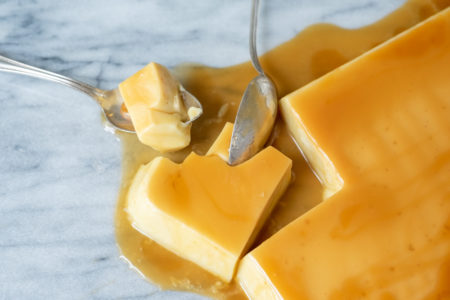This heady blend of herbs and spices is a staple of Moroccan cuisine. It’s a superstar in the kitchen and can transform stews, grilled dishes, and salads with its rich and herbaceous flavor.
Origin of Chermoula
Sometimes known as charmoula, chermoula is a North African herb sauce. It originated in Morocco and, over time, became popular in nearby Tunisia, Libya, and Algeria, with each country slightly adapting the blend to suit local tastes and available ingredients.
What does Chermoula taste like?
Chermoula has a fresh, herbaceous, and garlicky flavor with a hint of earthiness. Depending on the variety, it can also taste citrusy or spicy.
Chermoula Ingredients

The ingredients used for chermoula depend on where it’s made. Generally, the recipe calls for garlic, cilantro, cumin, oil, and salt. The ratios aren’t set in stone so it varies greatly among different cooks.
There are a few common variations of the basic chermoula recipe. In Morocco, it’s made with ras el hanout, a traditional local spice blend. Add sweet paprika, tomato paste, or roasted red pepper to make red chermoula or turmeric for yellow chermoula. Preserved lemons or lemon juice can be added to give it a zestier flavor ideal for balancing out fatty dishes. Adding fresh or ground chilis will make a spicier chermoula.
How to Make Chermoula
Chermoula is traditionally made in a mortar and pestle. And most locals recommend this method as hand crushing the ingredients brings out more oils and creates an incredibly flavorful and aromatic final product.
You can also make chermoula in a blender or food processor, with a little additional oil or water to achieve a similar consistency.

Chermoula Uses
Chermoula can be used as a marinade, sauce, or dip. Use it to marinate your beef, chicken, or fish for Moroccan tagine or stuff it into fried sardines to make mzeouej. Brush chermoula onto grilled or roasted meat and vegetables as they cook. Alternatively, you can serve it on the side or drizzle over the finished dish. It also makes a lovely salad dressing when thinned with oil and your choice of acid.

Feature Image: Flickr user Isabelle ( CC BY-NC-ND 2.0 )



